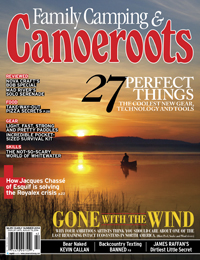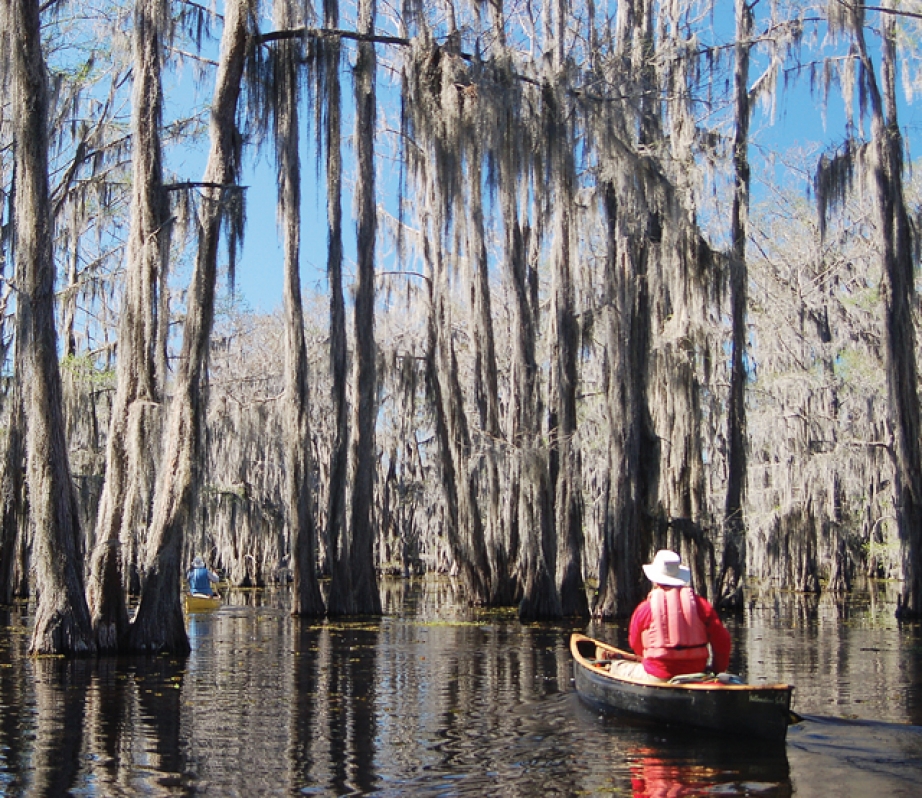“One has only matured in the sport of paddling when you can discover as much adventure in exploring a local swamp or marsh by canoe as running rapids or traveling to far-off lands.” —Ralph Frese (1926–2012), prominent canoe maker, conservationist and canoe culture icon.
To the average paddler, swamps conjure up visions of oppressive heat, treacherous mud, tangled vegetation, fetid water and creatures that creep, crawl, sting and bite. It’s a menacing, mysterious place with the power to suck an unwary traveler into its bowels.
At least that’s what horror movies like Curse of the Swamp Creature, Terror in the Swamp and Swamp Zombies, just to name a few, would have you believe. Maybe it’s Hollywood’s creepy and inaccurate stereotyping that causes many canoeists to shy away. But I believe swamps are fascinating treasure troves.
North America’s swamps vary in size from oasis-like bogs surrounded by steel and concrete to vast tracts of wilderness wetlands, the largest of which in the U.S. is Okefenokee Swamp’s 700 square miles. Tiny or immense, these oft-misunderstood liquid lands offer some of the most enchanting backdrops paddlers can hope for.
Swamps are a dream for wildlife lovers and botanists alike—lining the serpentine channels and tea-colored ponds are curtains of towering cypress, magnolia and water tupelo trees, their ranks broken only by patchy marshes and grassy prairies. If you’re lucky, you may spot a bald eagle snatching a fish out of the water and river otters at play. There’s a cacophony of unfamiliar insects, repetitive croaking of frogs and clamorous hooting of birds.
I’ve been smitten by swamps since buying my first canoe nearly 40 years ago. Whether on an overnight trip or weeklong journey into the labyrinth of brackish creeks and backwaters, I always feel like an explorer embarking into the unknown. Lakes and rivers don’t offer the same feeling of primordial exploration, the chance to paddle slowly and come face-to-face with wild growth around each bend and in every nook.
Henry David Thoreau, one of America’s most beloved and influential writers of the 19th century, was the patron saint of swamps. In an essay called Walking, he wrote, “hope and the future for me are not in lawns and cultivated fields, not in towns and cities, but in the impervious and quaking swamps…that was the jewel which dazzled me.”
Venture with Thoreau into the wildest and richest gardens and expect to be dazzled.
 This article first appeared in the Early Summer 2014 issue of Canoeroots Magazine.
This article first appeared in the Early Summer 2014 issue of Canoeroots Magazine.




